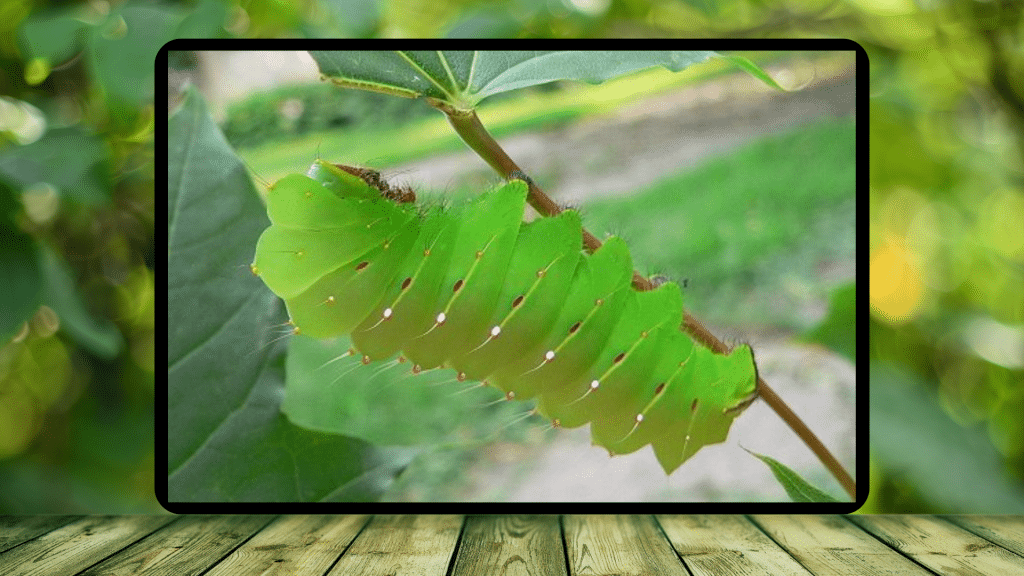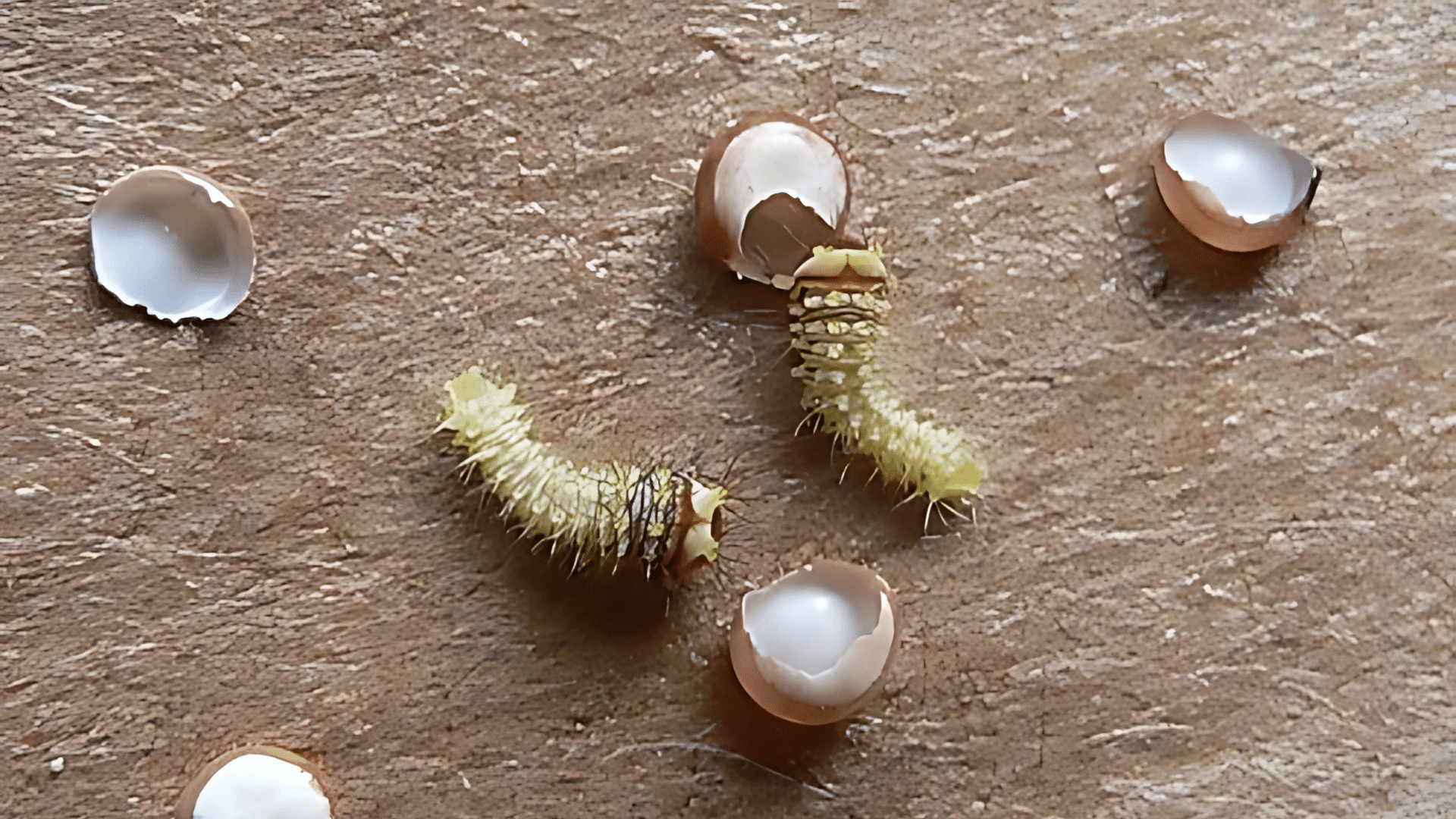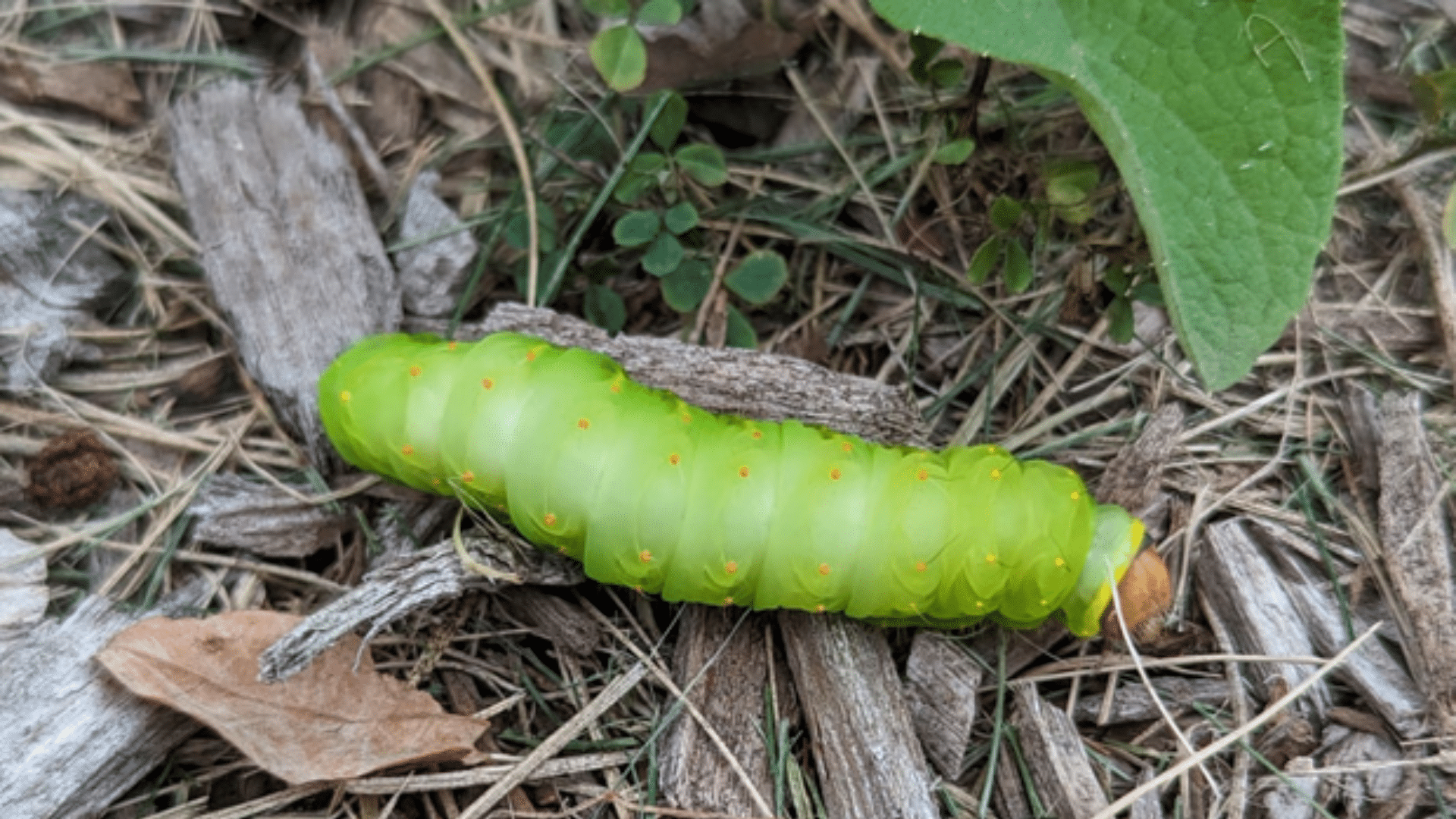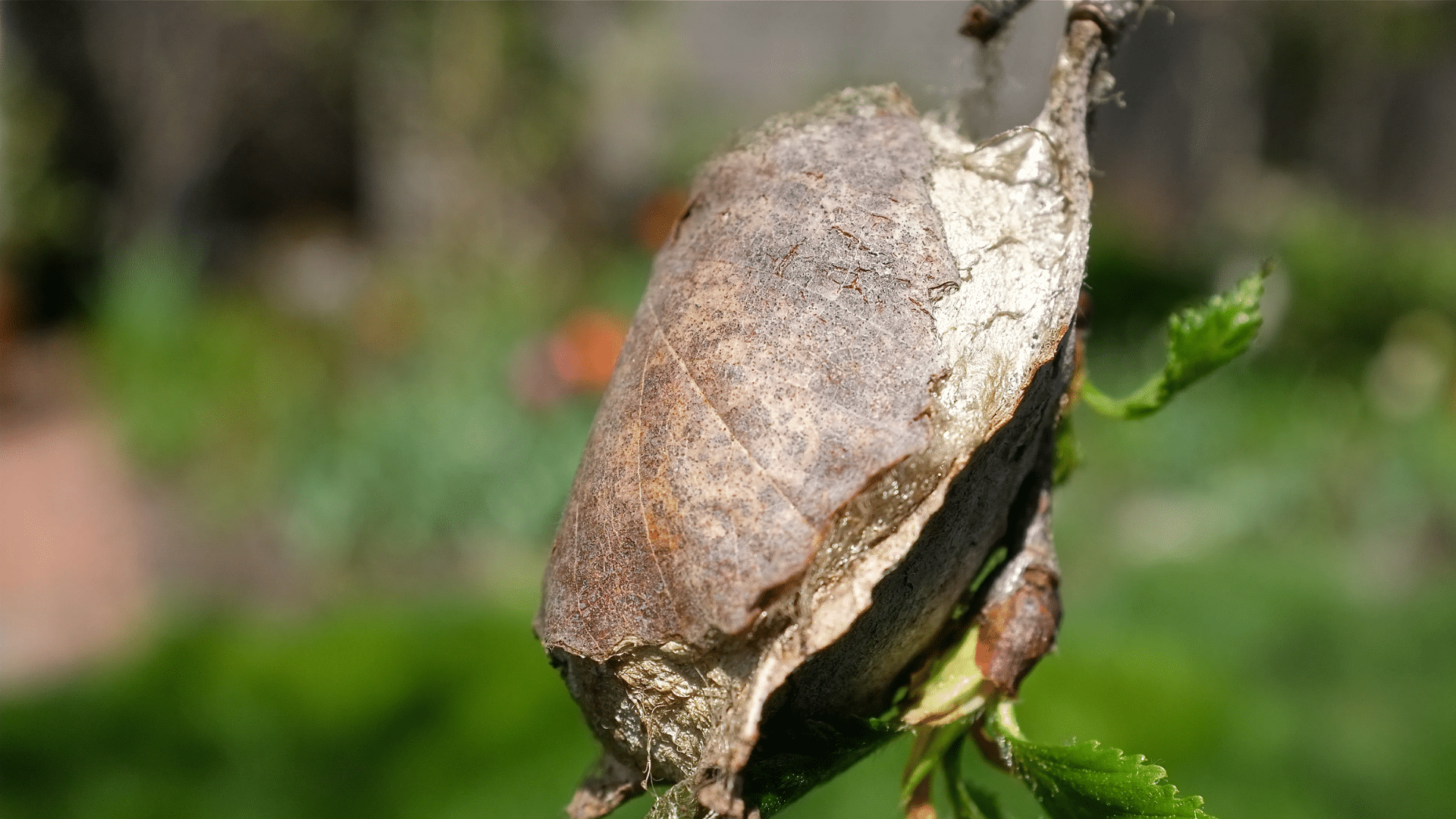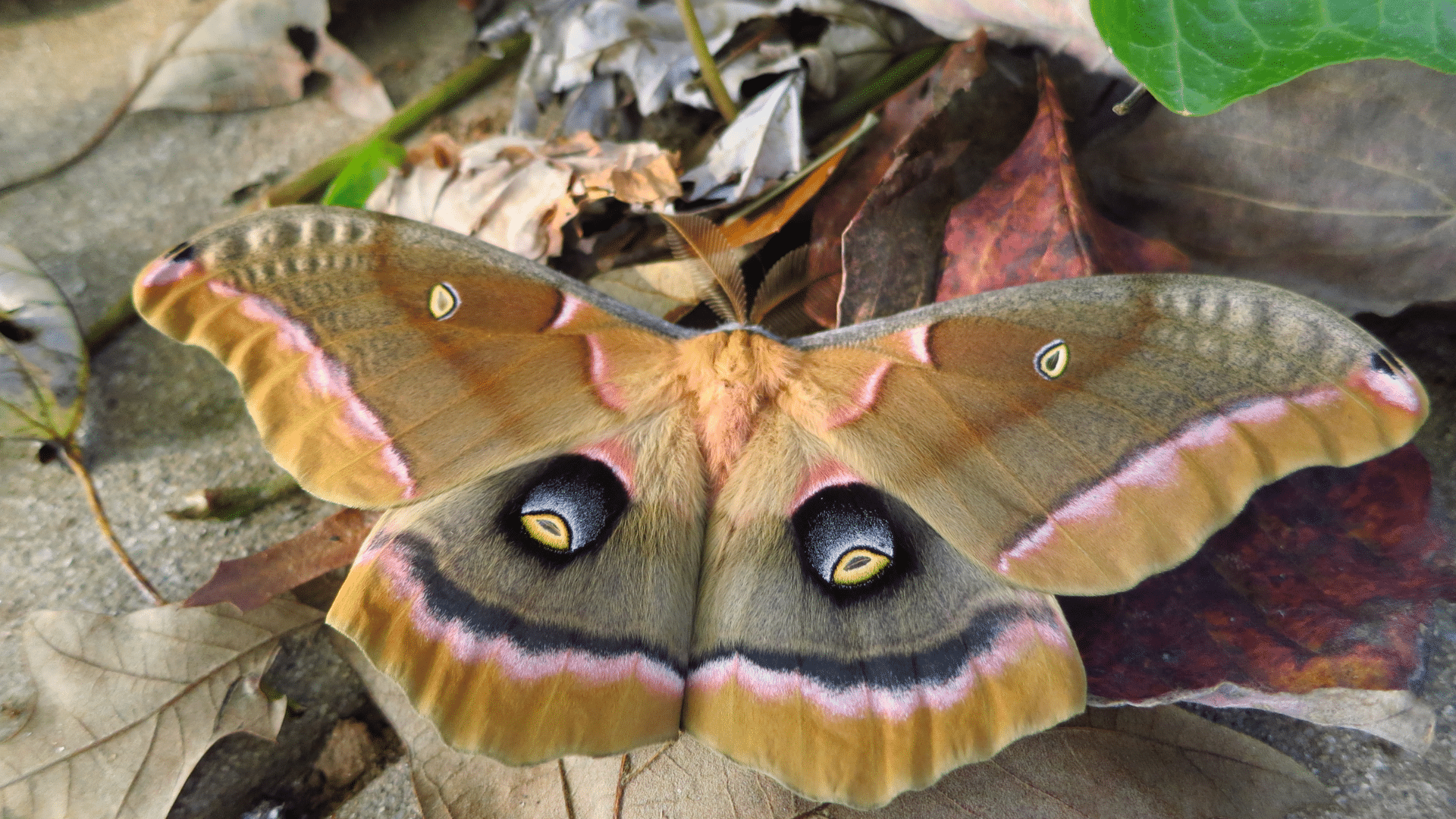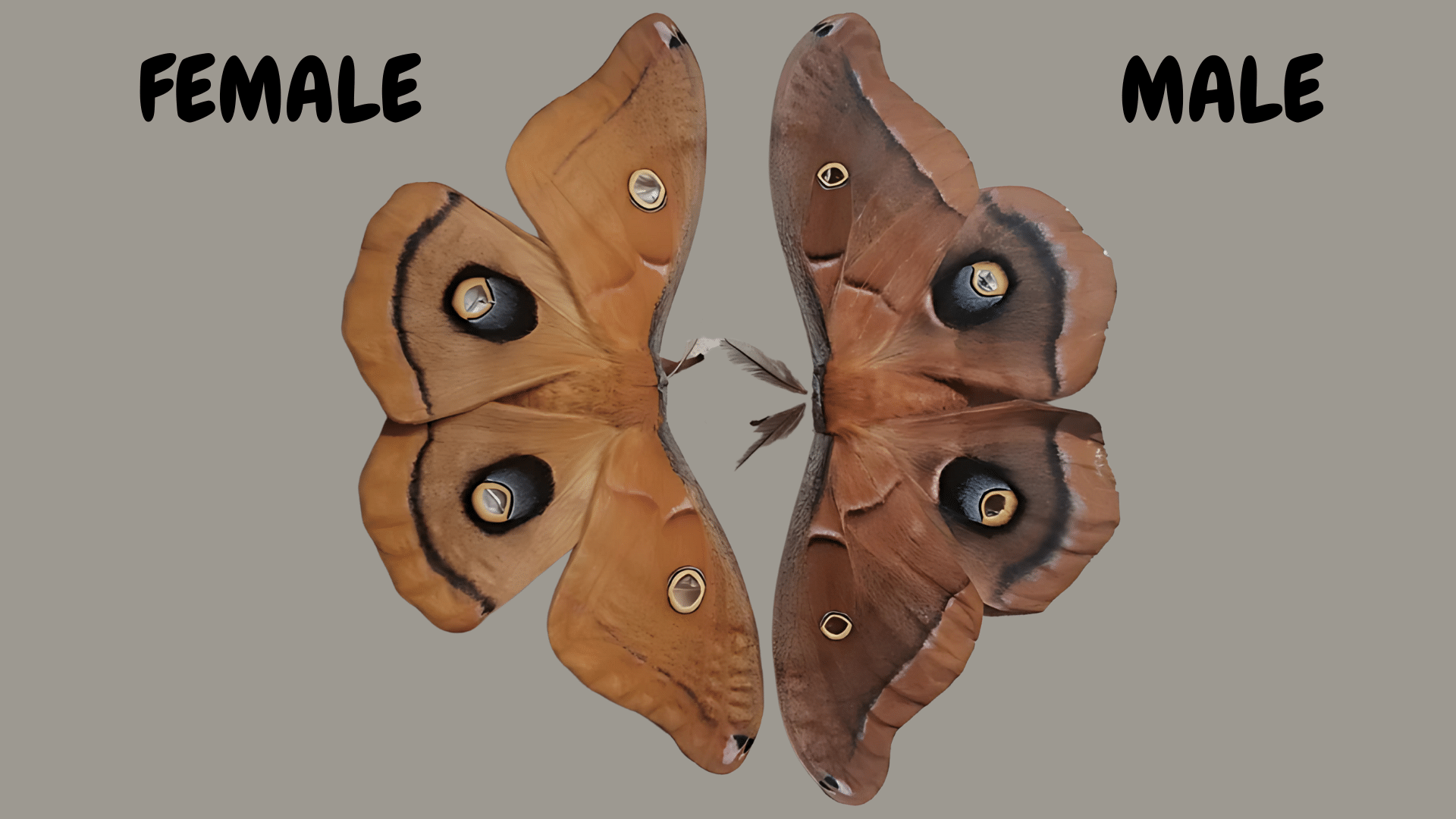Have you ever found a fat green caterpillar in your yard that’s about as big as your thumb?
You might have seen a Polyphemus moth caterpillar! These aren’t your ordinary garden caterpillars.
When you see them, they’re usually busy eating leaves from oak, maple, or other trees. But guess what? All that eating is helping them get ready for something beautiful.
They’re preparing to change into one of North America’s largest and most adored moths!
Pretty cool transformation, right? Let’s learn more about these incredible creatures and where you might find them!
The Life Cycle of The Polyphemus Moth Caterpillar
From a tiny egg to an attractive moth, the Polyphemus life cycle is quite a masterpiece of alteration.
Nature hides its wonders well, and this insect’s way reveals just how magical change can be.
1. Egg: The Beginning Spark
Smaller than a sprinkle and pale like mist, each Polyphemus egg clings to the underside of a leaf with quiet determination.
Though motionless on the outside, life stirs within. In about two weeks, the shell will crack open, releasing a new creature hungry for green, ready to begin its secret life through the trees.
2. Caterpillar: The Leaf Muncher
Bright green and constantly eating, the caterpillar’s job is simple: consume, grow, and survive. It munches leaf after leaf, shedding its skin several times as it increases in size.
Every bite fuels the next step of its story, as hidden inside this chubby leaf-chewer is a creature no one would expect to see.
3. Cocoon: The Quiet Sleep
When full and fat, the caterpillar spins itself a rough brown cocoon, attaching it securely to a twig or leaf.
Inside this silk shell, it undergoes one of nature’s most mysterious processes. The body softens and rearranges into something entirely different, legs form, wings appear, and a new being slowly takes shape in the dark.
4. Adult Moth: The Grand Finale
The cocoon splits, and out comes a large, winged marvel with tan fur and enormous eye-like spots.
The adult Polyphemus moth doesn’t eat, and its time is short. It flutters under the moonlight, seeking a mate before its brief life ends.
Its alteration is complete, short, silent, and utterly beautiful.
Watching them change from tiny specs into huge winged moths is like watching a magic trick in slow motion.
Where Can You Find a Polyphemus Moth?
These secretive leaf-chompers may be closer than you think. Even if you’re deep in the woods or chilling in your backyard, they might just be hanging out nearby.
- Forest edges are filled with native trees
- Backyard gardens with plenty of shade
- Leafy parks and schoolyards
- Anywhere oak, birch, or willow trees grow
Wild Characteristics of The Polyphemus Caterpillar
| Feature | Description |
|---|---|
| Bright Green Glow | Blends with leaves, looks fresh and vibrant. |
| White Lines | Thin stripes along the sides. |
| Silver Spots | Tiny shiny dots on the body. |
| Plump Body | Soft, round, and worm-like. |
| Defense Mode | Clicks and spits when scared. |
Male vs. Female Polyphemus Moths
You would think moths all look alike, right? Not the Polyphemus moth. Once you know the differences, they’re hard to miss.
Males have large, feather-like antennae that look like fancy mustaches, perfect for detecting female scents, while females have sleek, narrower antennae.
In terms of size and shape, females are generally heavier and rounder, as they carry eggs, while males are slimmer and built for speed.
Their colors also vary: males exhibit a reddish, fiery tint reminiscent of autumn leaves, while females display a lighter, creamy brown shade.
Even though their behavior differs, males spend the night actively searching for mates, while females stay still and let their scent do the talking.
Interesting Facts of The Polyphemus Moth Caterpillar
Beyond its bright green color and love for leaves, this caterpillar hides some incredible secrets.
Here are a few unique facts you might not know:
- First Meal is the Eggshell: Newly hatched caterpillars snack on their own eggshell to get a nutrient boost before eating leaves.
- Lone Feeders: They prefer being alone and rarely harm their host trees, even in big numbers.
- Pre-Pupa Gut Emptying: Before cocooning, they empty their gut to make metamorphosis easier.
- Click & Spit Defense: When threatened, they click and spit to scare off predators.
- Camouflaged Cocoons: Their silk cocoons blend seamlessly with leaf litter for protection, although parasites still pose a risk.
Together, these unique behaviors showcase the remarkable life of the Polyphemus caterpillar from egg to becoming a moth.
The Final Word
Isn’t it strange how something small, slow, and silent can carry such a powerful story?
Well, the Polyphemus moth is proof that even the tiniest life forms are living out wild, beautiful tales without needing anyone’s approval.
Wouldn’t it be nice to slow down and see them?
Next time you walk past a tree, stop and peek under a leaf. You might catch a chubby little caterpillar eating its way into greatness.

